
Helping Your Baby Create Language
Helping Your Baby Create Language
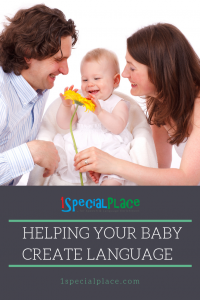
Your baby has started an incredible journey during this first year of life, one that develops a skill that will affect his whole life. Without language your child will not be able express his feelings, participate in school or in social groups with his friends, get into college or even interview for a job! It’s amazing how important language is! Both you and your child have lots of tools to help the process of language acquisition.
Your biggest role during this year is to be a loving, caring parent who can recognise the subtle changes in your child’s abilities, react and encourage them. This can be done in any situation that you and your child are in. Here is a list of different situations and some suggestions of what you can do to boost your child’s language acquisition.
Changing Time
You as a parent must be finding yourself changing your little one many a times a day! That may include changing clothes and diapers both. There are some specific things you can do and say during this time that will facilitate your baby’s developing communication skills. You might be having a routine of changing your baby’s clothes (first the right arm, then the left arm. You must start to say out loud what you are doing along with the routine acts. “First we take out this arm. Then we take out that arm. Ooooh. Naked baby! Naked baby!”(you can even take his name).
At first your little one hears a long string of words, without any specific awareness of where the words start and stop. Just like when you hear a new language, you can’t make out where the words are in the sentence. So to the baby it may sound like – “Firstwetakeoutthisarm. Thenwetakeoutthatarm. Ooooh. Nakedbaby! Nakedbaby!” However, as he hears similar language over time, he starts matching the actions with the words and the facial expressions, the tone of your voice and starts discerning the different words. Hence make use of these situations. They are excellent learning opportunities for your baby.
Don’t hesitate to use routines for valuable language learning experiences. During these everyday happenings, talk to your baby using similar types of words and sentences.
As you change your baby’s clothes, you most likely are very near him. You are providing your baby with the scene he enjoys. As your child enjoys the shapes and shadows of your face, he may start to oooh and ahhh. Take advantage of these vocalizations by ooohing and ahhhing back to him. Give meaning to ooohs and ahhhs, so that he begins to see what he “says” is actually meaningful to you.
Helping Your Baby Create Language
Download our App – SPEECH DOCTOR to check if your child’s communication skills developing on time.
Bath Time
Just like changing time, you will have a routine of giving bath to your little one. These can be actions that are repeated many times during the bath. Talk about what you are doing each time, just like you did during changing time. You are basically helping your child begin to identify the words that belong to the objects and actions for that routine. This is true for your baby at any age, whether at 3 months or at 10 months.
You can also brush up your baby’s joint attention skills during bath time. Most babies older than two months enjoy watching parents pour water out of the mug into the tub or bob the bath toy under the water and back out. You can use these actions to help develop your baby’s ability to change focus from you to the object ( falling water or bobbing toy) and back again, encouraging and creating joint attention with your baby.
Meal Time
When your baby is really small, whether you are breast feeding him or bottle feeding him, you hold him in close proximity to yourself so that you are within his visual range. During this time, you should focus on your child’s face as you talk to him. This models for good eye contact and promotes face to face interactions.
As your child grows and starts eating , you can take advantage of his growing joint attention skills to talk about the objects you are using ( food, bowl, plate, spoon, glass, cup, bottle, high chair etc) The idea here is not to label what you are using by saying – “This is a spoon”, “This is a glass”, “This is banana” etc. This would be a very unnatural conversation and would sound silly. It would also be not a very language enriching model of speech. Rather you could simply talk about what is happening as it is happening. “Alright let’s sit on the high chair. Here I got your Banana. Scoop up with your spoon. Yum Yum banana.” This way, you provide names/labels for the actions in which you are involved, providing lots of opportunities for your baby to start recognising with objects and actions.
Here are some myths about children learning to talk.
Play Time
This can be the most enriching language learning experience for your baby. While playing with your baby, remember to sing various songs to him. You can choose from simple nursery rhymes or slow paced songs in your language. You can play simple games of “peek – a – boo” or “pat – a – cake” , these games are repetitive and very rich in language too. Toys which are musical and teach cause and effect are great language imparting tools. It is in the way you use your child’s joint attention and listening skills that makes all the difference. Even some swing time in the park can be loaded with talks and opportunities to tell your baby about his surroundings. “Lets swing..yay.. one two, three, up we go..down we come..!”
Travelling
Travelling can be a tough job with a little one. Even a short trip to the mall can involve a lot of preparation. However you must always remember that all these are language enriching opportunities for your little one. The whole talking can start right from the moment you get your baby changed.
Talk to him about the car seat and the reason why you are going out. Tell him what you will do there. Use simple words and speak slowly. Also avoid over bombardment of information to babies as it gets overwhelming for them. “ We are off to see Aunty. They will go in our car. We will meet uncle too. You look so smart in this shirt.”
Similarly there are many activities during the day where you and your baby can team up and create language together. Between you and your child, all the raw materials needed for language learning are available. Enjoy the first twelve months, and recognise all the important skills he is learning. And be prepared, he is about to say his first word!
Here is a list of Speech & Language Milestones for your child
Helping Your Baby Create Language
Leave us a reply! Subscribe here to get more tips and resources for developing your child’s speech.
Tell us how you liked our The Gadget Fit story.
For more ideas check out our other blogs
- Speech Therapy Activities for Ganesha Chaturthi - September 6, 2024
- 5 Ways to Help Your Child’s Language Development - August 31, 2024
- Epilepsy – Myths and Facts - August 20, 2024

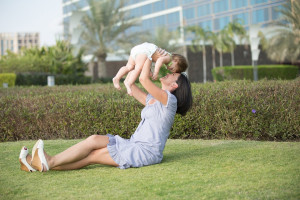
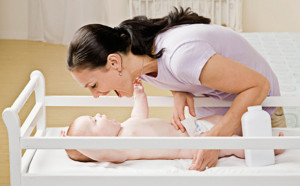
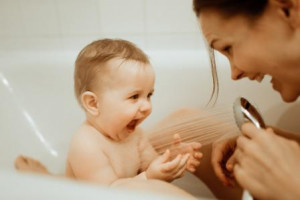
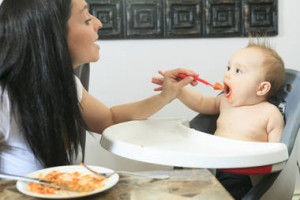
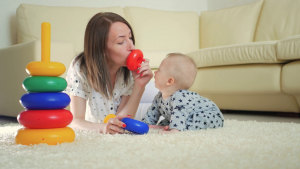
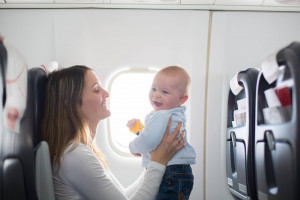
Leave a Comment
(0 Comments)